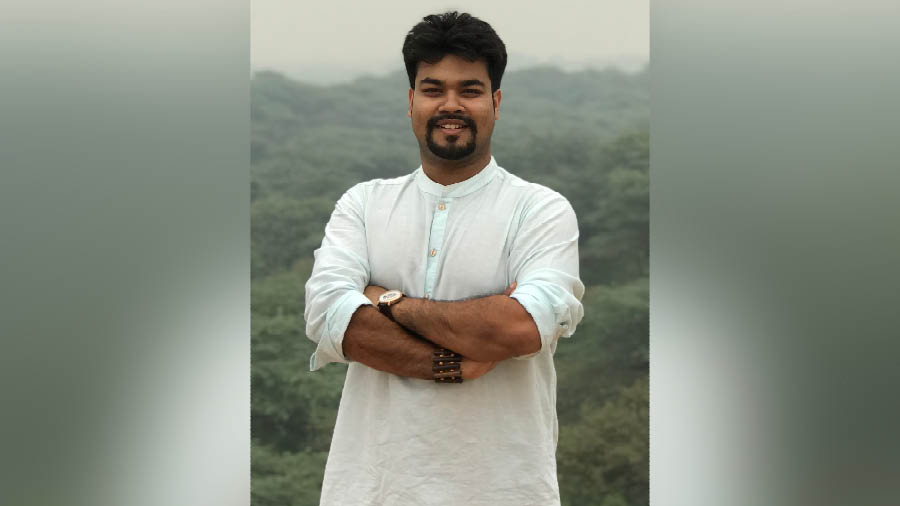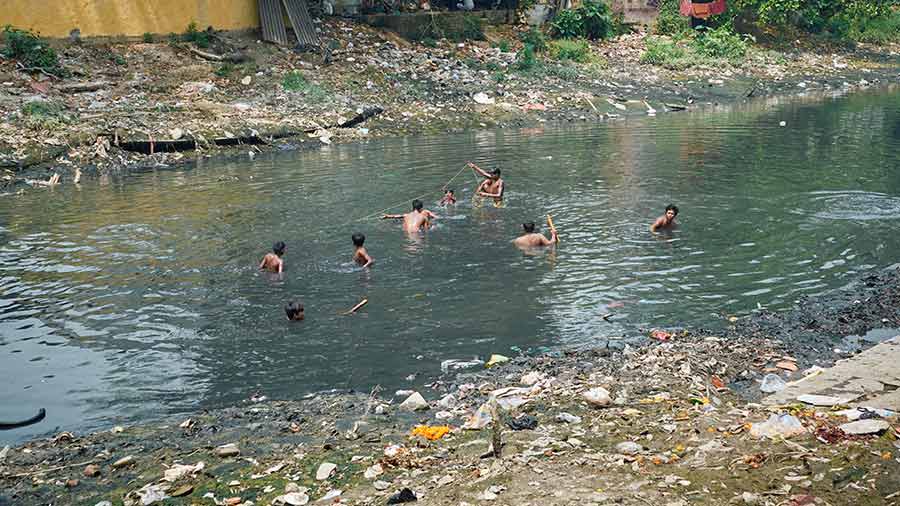Whether it is the Eiffel Tower in Ratatouille, the Brooklyn Bridge in A Beautiful Mind or Mumbai's Marine Drive in countless Bollywood films, establishment shots are a crucial device used by filmmakers across the globe to introduce a geographical location through its iconography. For the City of Joy, most establishment shots feature the Howrah Bridge with the Ganga flowing underneath, replete with cruises, humble boats and the occasional one-rupee coin making its way from a passing train’s window. Kolkata is, quite literally, known by its waters.
One such initiative which “aims to look at the city through its waters” is Jol Jyanto Kolkata, the Kolkata chapter of the Living Waters Museum. Founded by Sara Ahmed in 2017, Living Waters Museum, which is headquartered in IISER Pune, wants to “make individuals aware of their water footprint” through virtual water museums across cities. A first of its kind, the virtual museum employs hyper-local stories to make residents aware of their relationship with water. As of now, local virtual museums are operational in Mumbai, Pune, Jodhpur, Goa and Kolkata.
A repository of Kolkata’s stories of water
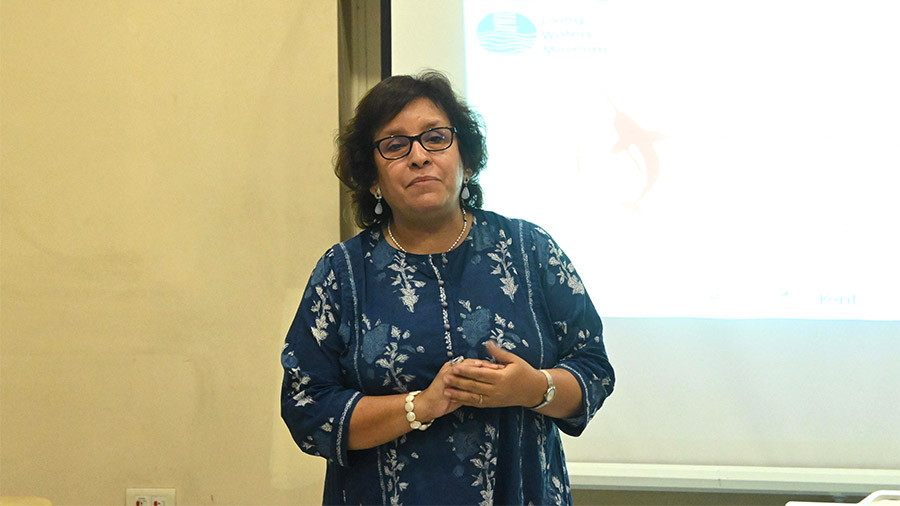
Sara Ahmed, the founder of the Living Waters Museum
Amit Pramanik‘Jol’ is the Bengali word for ‘water’ and ‘jol jyanto’ idiomatically translates into something that is “living and breathing”. Hence, Jol Jyanto Kolkata stands for the “Living Waters of Kolkata”. Quite aptly, the Gangetic dolphin, which serves as a ray of hope for natural fauna thriving in the waters of the Hooghly, swims atop the logo of Jol Jyanto Kolkata.
Curated by Studio Vitamin D and hosting 21 stories revolving around the water of the city, Jol Jyanto Kolkata’s website, which can be accessed here, serves as the city’s gateway to water consciousness. With each story available in both English and Bengali, Jol Jyanto Kolkata remains for the masses, as do its sister chapters in other cities. From how unequal distribution of water is leading to economic inequity even though West Bengal levies no water tax to the history of Lal Dighi, which served as the “Blue Centre of the White Town” of the erstwhile British capital to how over 420 million tonnes of water are lost every day owing to leakages in Kolkata’s water distribution system, the virtual museum has it all.
History, ecology, music and more
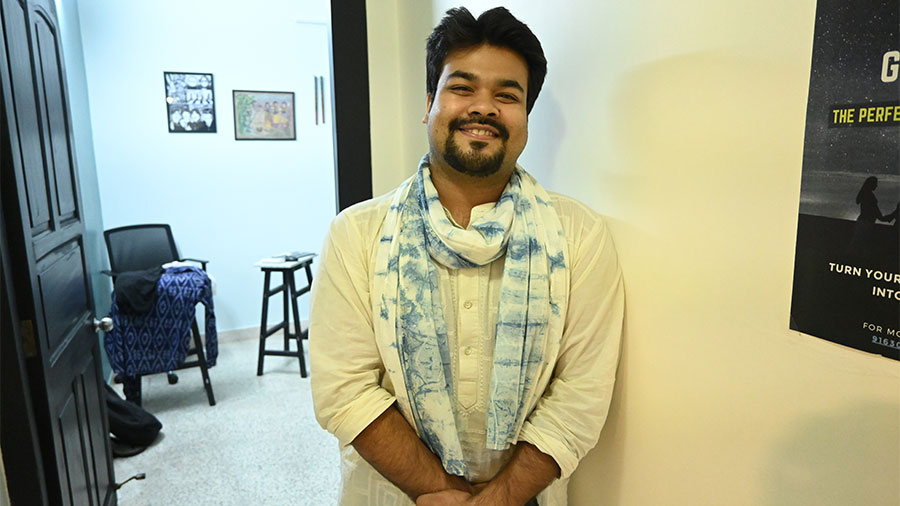
Sukrit Sen, the Kolkata chapter leader
Amit PramanikUpholding its vision, which believes that a museum cannot remain restricted to a website, Jol Jyanto Kolkata’s launch in late September was a week-long affair, with My Kolkata as digital partner. The first day involved a walk through the Indenture Memorial (inside the Kidderpore dock of the Kolkata Port Trust) and the Hooghly Jute Mill. With a packed group of 45 attendees, the day was spent recollecting multiple historical spots and their significance and how the Hooghly became crucial to keeping the jute industry alive post-Partition, when jute mills found themselves in India with farms left behind in present-day Bangladesh. However, for Sukrit Sen, the Kolkata chapter leader, the most memorable memory of the day was “eating pakoras made out of jute leaves”.

East India Dastangos perform ‘Kalkatta ki Jalkatha’
Amit PramanikThe second day of the Jol Jyanto Kolkata launch was nestled within the lush greenery of the Alka Jalan Foundation in Ballygunge. Nilanjana Deb, former professor of English at Jadavpur University, inaugurated the organisation’s website, which carries a hidden pun accessible only to those familiar with the language of the city. The event was graced by Bhramori Ray’s kathak to the beats of Rim Jhim Jhoro Jhoro Re and East India Dastangos’s Kalkatta Ki Jalkatha. The mellifluous storytelling session, performed by the Dastangos quartet comprising Palashh Chaturvedi, Zahid Hossain, Gurmeet Singh and Sukrit, educated the audience on Kolkata’s history through its waters. The performance was interspersed with memorable digressions such as the ones on the Mayurpankhi boat and the arrival of the unmistakable Kolkata biryani through Wajid Ali Shah’s waterways, alongside interconnected songs such as Kader Kuler Bou, complete with its hilarious translation into broken English. “Through our artists, we bring out the intangible stories of water that can only be felt but never documented on paper,” described Sukrit.
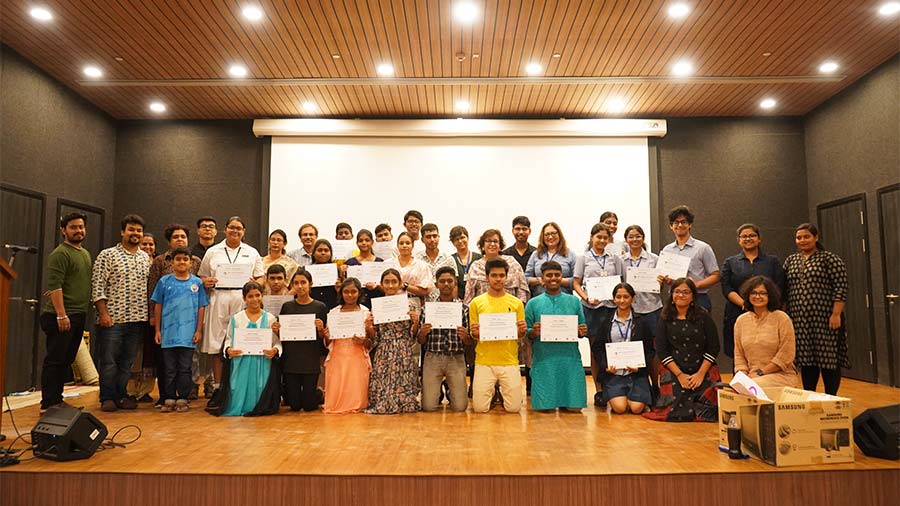
Students of Modern High School International participated in the programme on its third day
Jol Jyanto Kolkata/Sukrit SenThe third day encompassed a walk along the ghats of the city ending at Kumartuli, while the fourth day was held at Modern High School International, where six students from the home school and visiting students from Bamanghata High School, Kheyadaha High School, Disappearing Dialogues and IIT Kharagpur shared urban and peri-urban stories of how they see their water through art and skits.
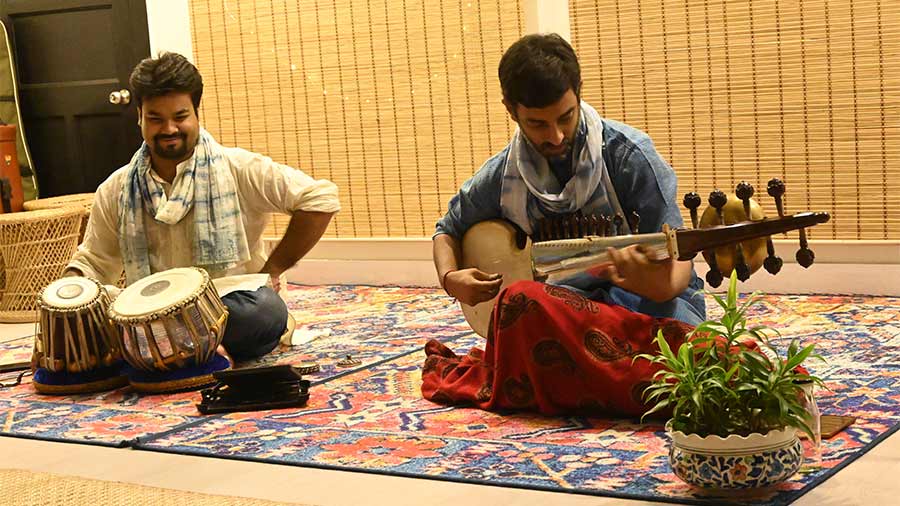
Sukrit and Saumalya Sareswari perform at Chaitown Community
Amit PramanikThe fourth and final day of the programme took place in the form of a cultural evening at Chaitown Community, which, amidst hummus, hibiscus tea and twinkling yellow lanterns atop jute mats, comprised a riveting rendition of Raag Megh on the sarod by Saumalya Sareswari (who has designed the background score for Jol Jyanto Kolkata) with Sukrit himself on the tabla.
“We’ve always worked on the idea that we need to go beyond academic learning. Our work usually remains within a very small circle of people, the same people talk about climate change year after year. Living Waters Museum is an attempt to transcend these boundaries and take the conversation to the masses. As a museum, we can’t undertake conservation work, but we can definitely start conversations around what we aim to conserve. This brings sensitive issues to the attention of policymakers and indirectly ends up fulfilling our aim. We do anything and everything around water. Even moulds that are used to engrave piscine designs on sandesh fall under our purview,” stated Sukrit.
The Living Waters Museum is currently endorsed by UNESCO’s intergovernmental hydrology programme as a special initiative towards goal six of the Sustainable Development Goals (SDGs) and plans on extending its wings to Burkina Faso, Sudan, Egypt and Ethiopia later this year to create virtual water museums highlighting the Blue Nile and other water bodies.
Guests speak
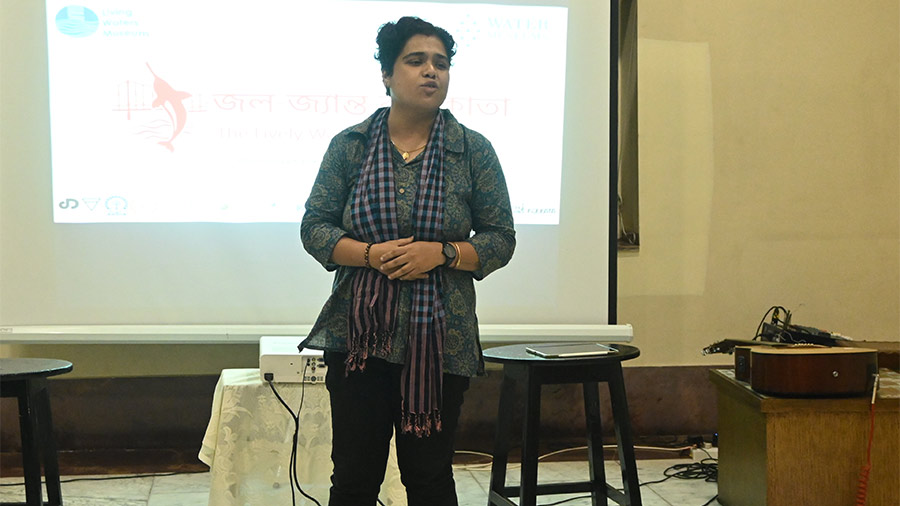
Jenia Mukherjee
Amit Pramanik“Through Jol Jyanto Kolkata, Kolkatans from different age groups have captured the plural storylines of how water and society shape and reshape one another. As of now, only a couple of books exist on Kolkata’s waters, and although they are excellent in their respective areas of specialisation, they are also very scholarly. Policymakers or citizens usually lose interest within a couple of pages and, thus, never become aware of their city’s water. It’s for this exact reason that Jol Jyanto Kolkata, which narrates hydro stories through attractive formats, has become important.”
— Jenia Mukherjee, co-curator of Jol Jyanto Kolkata
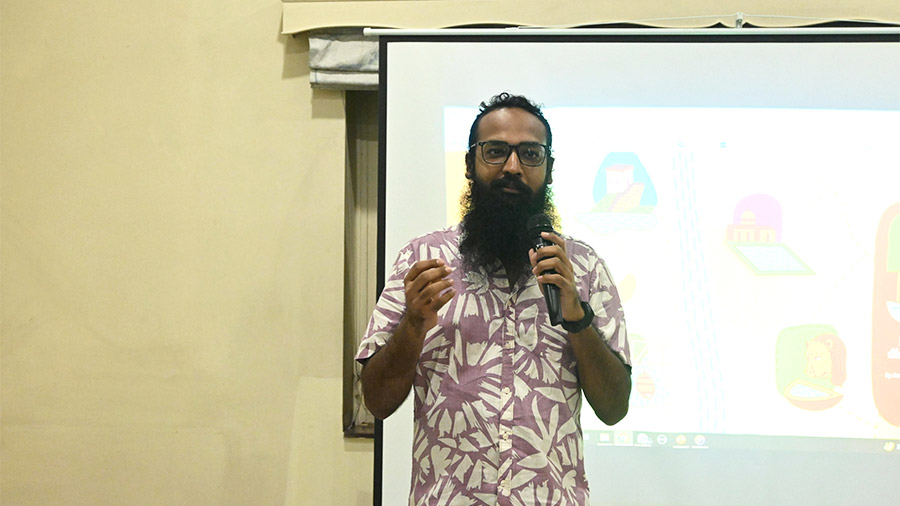
Siddharth Agarwal
Amit Pramanik“Kolkata’s river used to be a seasonal one. Its perennial nature was only achieved a few years back through the establishment of the Farakka barrage in Murshidabad that diverts water to the city. However, this isn’t sustainable. We can’t be tapping into different water bodies as and when we desire. Kolkata gets so much rain that we might be self-sufficient if we just harvest our rainwater. But where’s the push? Where is the citizen’s demand for it? Or the government’s policy on it? This is a question that absolutely needs to be raised and Jol Jyanto Kolkata is the first step towards it.”
— Siddharth Agarwal, contributor to Jol Jyanto Kolkata

Evan Tims
Amit Pramanik“It was mesmerising to see water represented through such intangible cultural artefacts. I’ve never come across a water museum before. I believe that as climate change becomes more and more of a reality, it’s crucial that we work collaboratively across borders to protect and conserve water.”
— Evan Tims, Fulbright scholar researching water and climate change
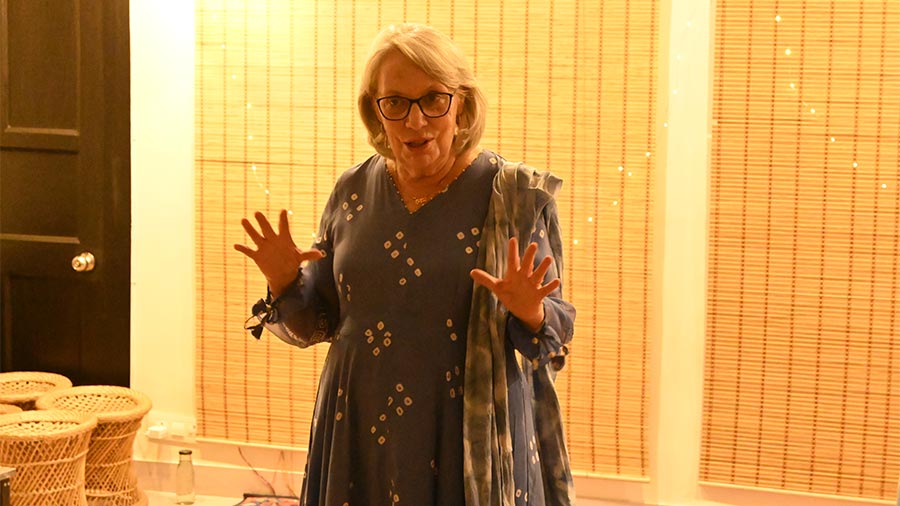
Elizabeth Decker
Amit Pramanik“I love the wetlands of Kolkata and the river life. We share this one world and we should take care of it as much as we can. Chaitown believes in honouring and respecting Mother Nature, so anytime we come across someone who has a similar vision through art, we wholeheartedly welcome them onboard, as was the case with Jol Jyanto Kolkata.”
— Elizabeth Decker, founder-director, Chaitown Community



